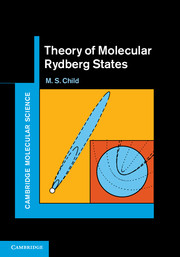Book contents
- Frontmatter
- Contents
- Preface
- 1 Molecular Rydberg states
- 2 The quantum defect picture
- 3 Ab-initio quantum defects
- 4 Frame transformations and channel interactions
- 5 Competitive fragmentation
- 6 Photo-excitation
- 7 Photo-ionization
- 8 Manipulating Rydberg states
- Appendix A MQDT normalization
- Appendix B Alternative MQDT representations
- Appendix C Rotational frame transformations
- Appendix D Optical transition and photo-ionization amplitudes
- Appendix E Generalized MQDT representation
- Appendix F Notation
- Index
- References
8 - Manipulating Rydberg states
Published online by Cambridge University Press: 07 October 2011
- Frontmatter
- Contents
- Preface
- 1 Molecular Rydberg states
- 2 The quantum defect picture
- 3 Ab-initio quantum defects
- 4 Frame transformations and channel interactions
- 5 Competitive fragmentation
- 6 Photo-excitation
- 7 Photo-ionization
- 8 Manipulating Rydberg states
- Appendix A MQDT normalization
- Appendix B Alternative MQDT representations
- Appendix C Rotational frame transformations
- Appendix D Optical transition and photo-ionization amplitudes
- Appendix E Generalized MQDT representation
- Appendix F Notation
- Index
- References
Summary
The huge spatial extension of atomic and molecular Rydberg states makes them amenable to manipulation in a variety of ways. One type of experiment involves the creation of a time-dependent wavepacket, which may be manipulated by subsequent light pulses to control the outcome of the fragmentation products [1]. Interesting intensity recurrences and revivals are also observed as leading and trailing elements of the wavepacket interfere with each other. The response to electric fields is also experimentally important in the field-ionization detection of highly excited species and in the technique of high-resolution pulsed-field zero-kinetic energy (ZEKE-PFI) spectroscopy [2, 3]. This chapter concentrates on these two topics, but the reader should be aware of the quasi-Landau response to magnetic fields, particularly at field strengths such that the Landau frequencies are comparable to those of hydrogenic orbits, because the Rydberg scaling properties make them ideal candidates for investigating ‘quantum chaos’ [2, 4].
Rydberg wavepackets
Despite the well-known equivalence between the time-dependent and time independent pictures for conservative systems (i.e. those with time-independent Hamiltonians), the ability to create and manipulate Rydberg wavepackets offers novel insights into the underlying dynamics. Here we concentrate on three aspects of the time-dependent theory. The first shows that the familiar level structure of the hydrogen atom leads to a surprisingly intricate pattern of recurrences and revivals arising from interference between different components of the spreading wavepacket. Revivals of a different type are seen to occur in molecules as a result of the stroboscopic beats between the frequencies of rotational and electronic motion that were described in Section 4.2.4.
- Type
- Chapter
- Information
- Theory of Molecular Rydberg States , pp. 239 - 272Publisher: Cambridge University PressPrint publication year: 2011

